Locomotion (like) games for MSX1
For MSX2 games, see this page.Diamond Field
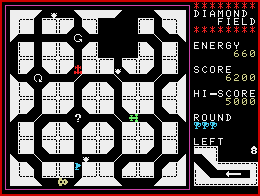 |
*This game is excluded from my recommended games list due to the following reason. While this game is great for a 1984 release, the printed code is difficult to read. The font itself in the printout is poor and faded and gone in places. |
Note:
The code is long enough for 15 screens. (1 screen = 40 characters x 24 rows.)Particular attention should be paid when typing lines below.
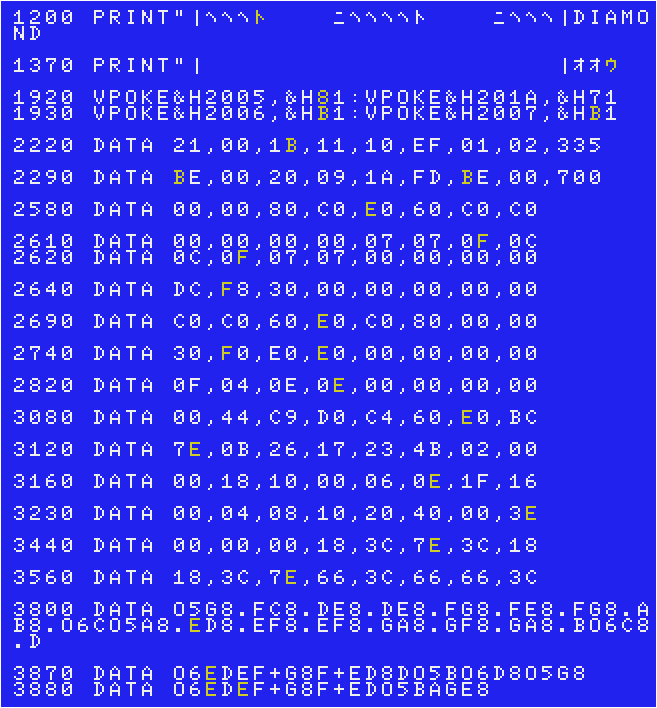
In addition, it would be better if you modify the following lines.

The line #1050: The original message was "You are Hi-Score!!".
The line #1300: The author asks you to use CHR$(176), however, that suggestion was worse.
If you modify the code as described above, each checksum will change as follows (using version 3.1 coded by the "MSX•FAN" team).

Sorry if there are any typos, however, I have tested my data, and had no problems.
This game is originally for tape. This is because part of the program's area of use overlaps with the 1st disk's work area after run the program.
Don't be going to save the program file itself again after run it.
Joystick support:
"STICK(0)" is found in the line #630."STRIG(0)" is found in the line #1130.
The quickest way is to simply replace each "0" with "1".
Don't Stop
 |
GRAPH / Trigger 2: Rotate the arrow 90 degrees. *This game is excluded from my recommended games list. It's because now many superb games are in that list. If you are really interested in "Locomotion" like games, go ahead. |
For each checksum, please refer to the magazine's page.(Use "version 2.1".)
For Amiga CD32 + FDD users:
The game itself would be sluggish and time would be out if CPU is 020. Fix the following lines.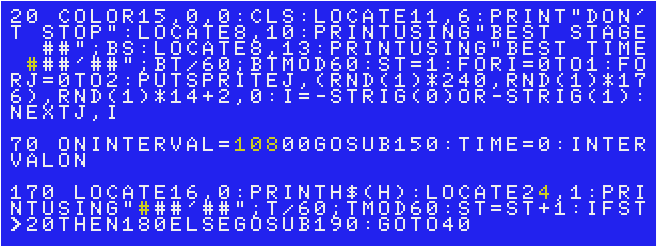
Lost Station
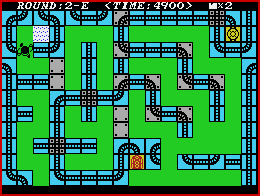 |
Back Space key: Undo. (You can't undo after you yourself turned.) F1 key: Restart the current level. 1~9 keys: Change the game speed. Return key: Enter the password screen from the title screen. You must also press it after you enter 3 characters. A~Z keys: Enter a password (3 characters) at the password screen. |
Note:
Each checksum is as follows (using version 3.1 coded by the "MSX•FAN" team).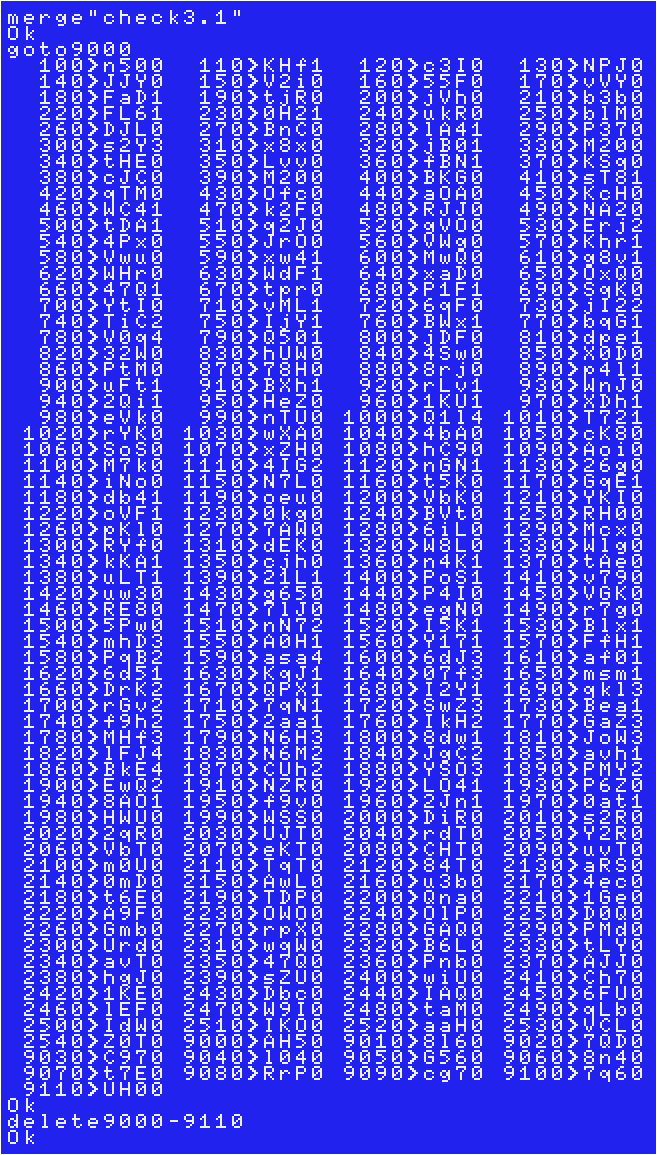
Sorry if there are any typos, however, I have tested my data, and had no problems.
Joystick support:
"STICK(0)" is found in the lines #170 and #570."STRIG(0)" is found in the line #280.
The quickest way is to simply replace each "0" with "1".
In addition, you can "undo" by Trigger 2 instead of Back Space key after modified the line #150.
You can also modify the line #1190 to start the game from the title screen by Trigger 1 instead of a key,

For MSXAdvance (on SNES+AD Adapter) users:
Sorry, you have to define following keys for L, R, Start and Select when you want.
F1 key, 1~9 keys, A~Z keys and Return key
Rail Roader
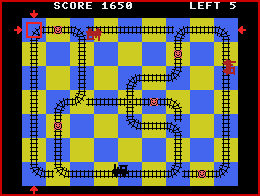 |
*While "Lost Station" was a fusion of "Locomotion" and "Sokoban" elements, this game is a pure "Locomotion" game. |
Note:
Type "SCREEN0:WIDTH48" in advance. Particular attention should be paid when typing lines below.
Each checksum is as follows (using version 3.1 coded by the "MSX•FAN" team).
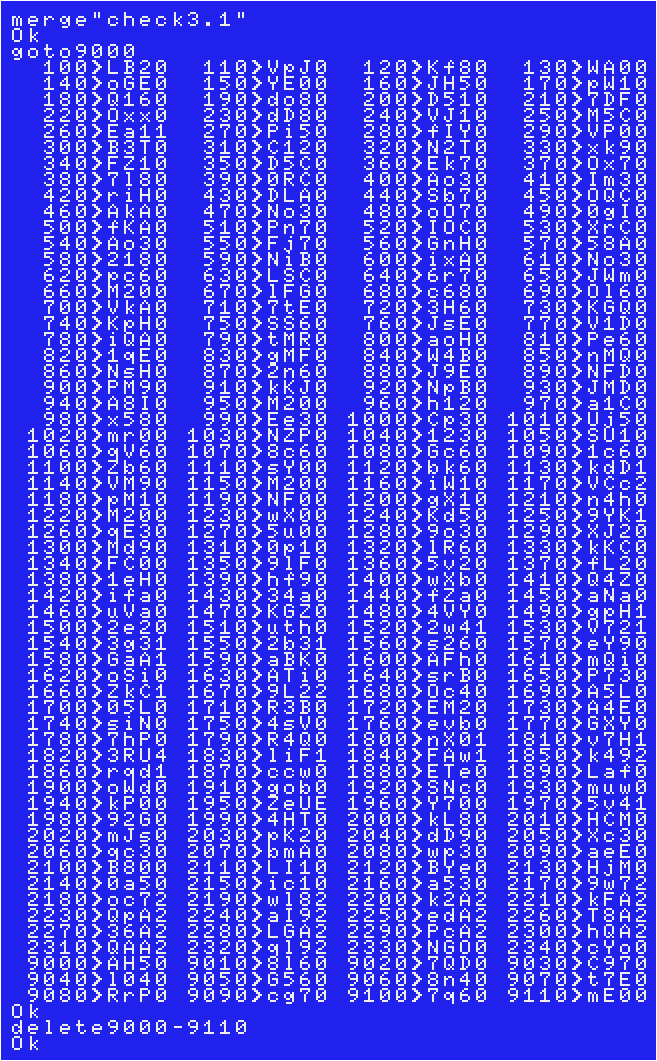
Sorry if there are any typos, however, I have tested my data, and had no problems.
The Point Changer
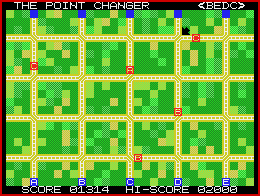 |
*This game is currently excluded from my recommended games list. It's because the trains can cross each other without colliding. If you are really interested in "Locomotion" like games, go ahead. |
For each checksum, please refer to the magazine's page.
>>Return to the "Type-in MSX programs" page






